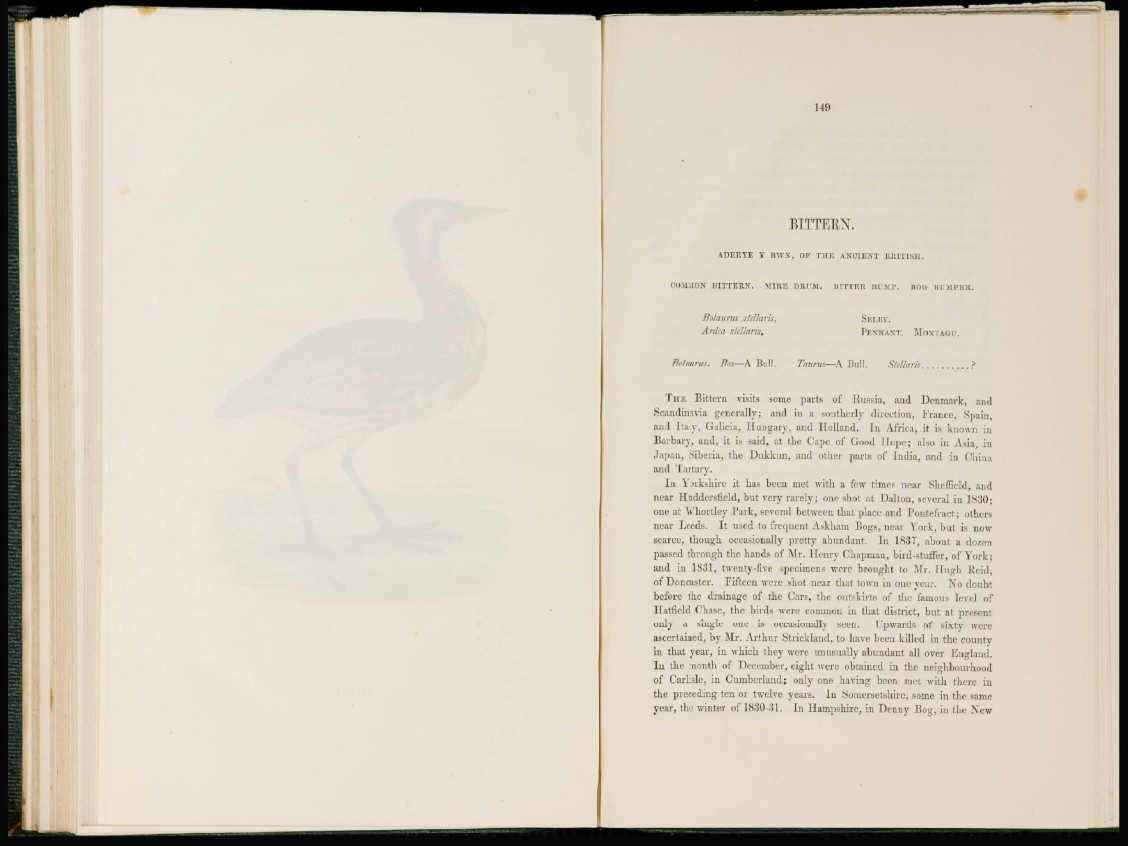
1 19
BITTERN.
A I) E RYE Y BWS, OF THE ANCIENT BRITISH.
COMMON BITTERN. MIRE DRI'M. HITTER HI Ml'. BUG JUMPER.
Bo/aunts sfeHaris, SRI.BY.
Anha shUaris, PENNANT. MONTAGU.
Ro/aurus. fi»s—k BULL. Taurus—A BULL. SH/aris ?
THE Bittern visits some parts of Russia, and Denmark, and
Scandinavia generally; and in a southerly direction, France, Spain,
and Italy, Galicia, Hungary, and Holland. In Africa, it is known in
Barbary, and, it is said, at the Cape of Good Hope; also in Asia, in
Japan, Siberia, the Dukkun, and other parts of India, and in China
and Tartary.
I n Yorkshire it has been met with a few times near Sheffield, and
near Huddersfield, but very rarely; one shot at Dalton, several in 1830;
one at Wnortley Park, several between that place and Pontefract; others
near Leeds. It used to frequent Askham Bogs, near York, but is now
scarce, though occasionally pretty abundant. In 1837, about a dozen
passed through the hands of Mr. Henry Chapman, bird-stuffcr, of York;
and in 1831, twenty-five specimens were brought to .Mr. Hugh llcid,
of Doneaster. Fifteen were shot near that town in one year. No doubt
before the drainage of the Cars, the outskirts of the famous level of
Hatfield Chase, the birds were common in that district, but at present
only a single one is occasionally seen. Upwards of sixty were
ascertained, by Mr. Arthur Strickland, to have been killed in the county
in that year, in which they were unusually abundant all over England.
I n the month of December, eight were obtained in the neighbourhood
of Carlisle, in Cumberland; only one having been met with there in
the preceding ten or twelve years. In Somersetshire, some in the same
year, the winter of 1830-31. In Hampshire, in Denny Bog, in the New